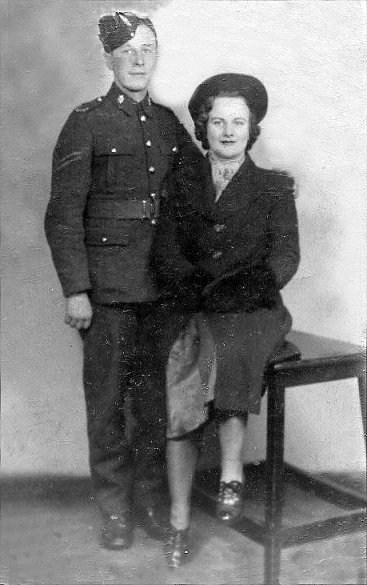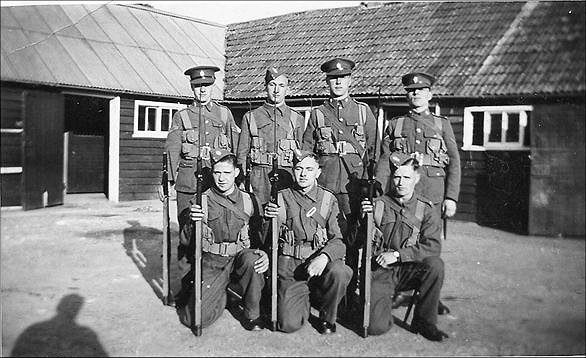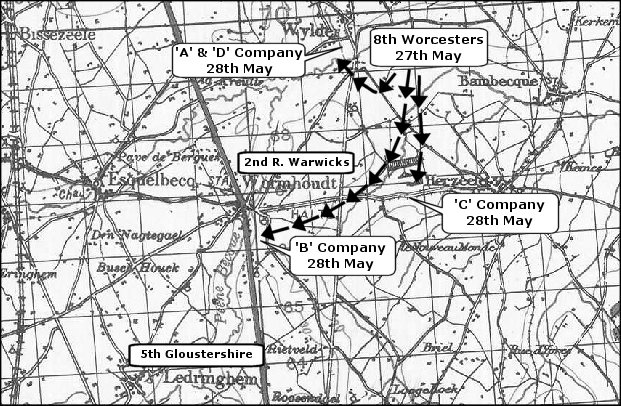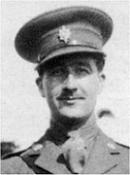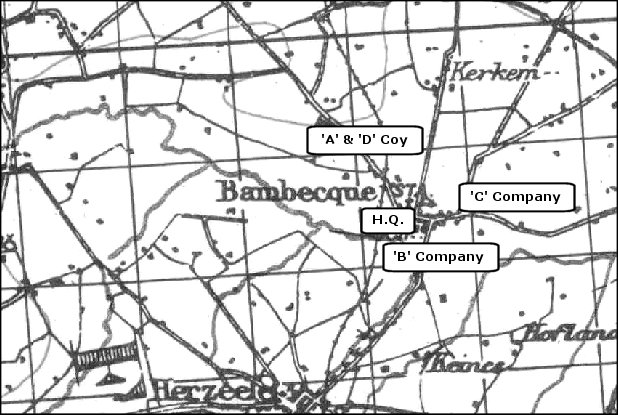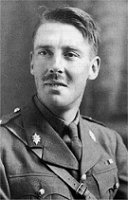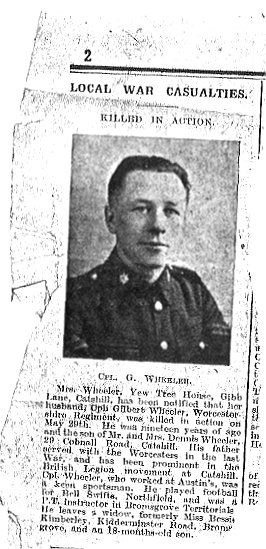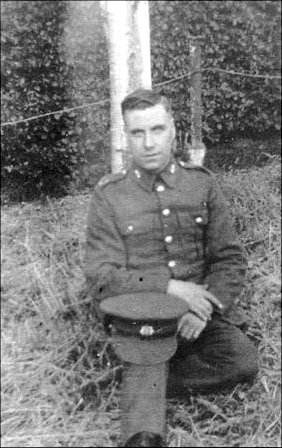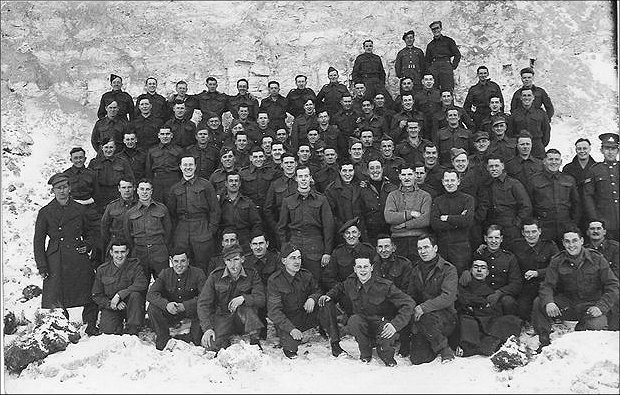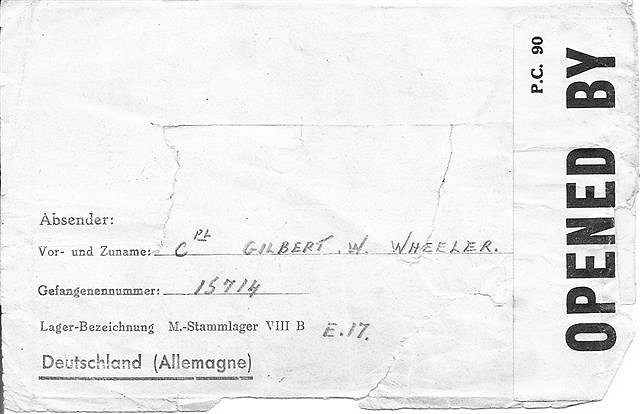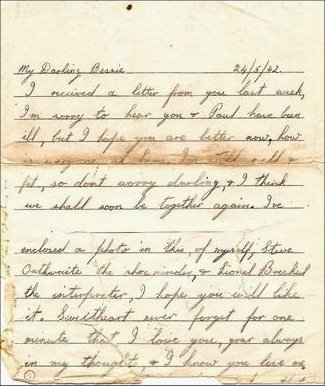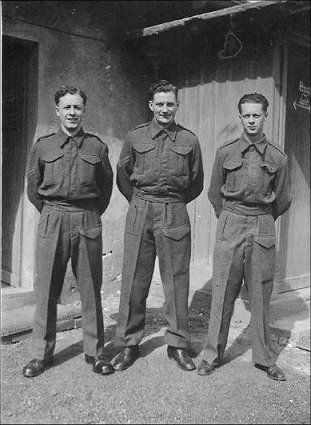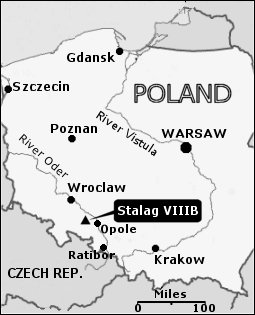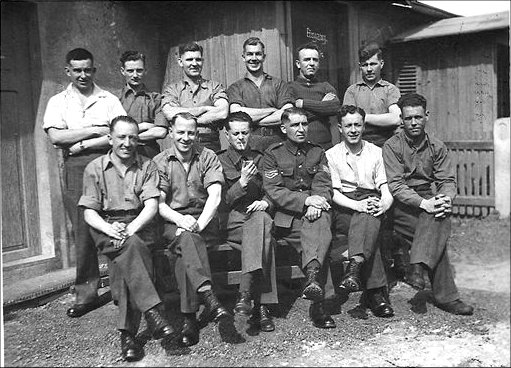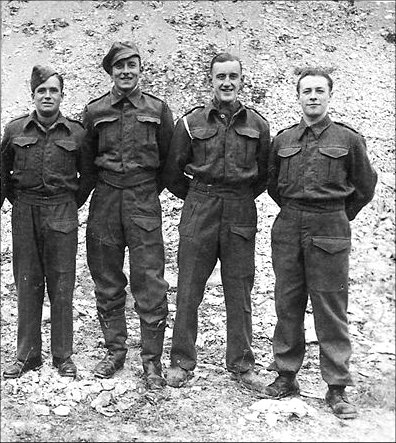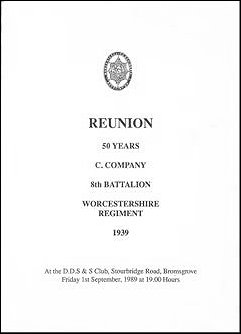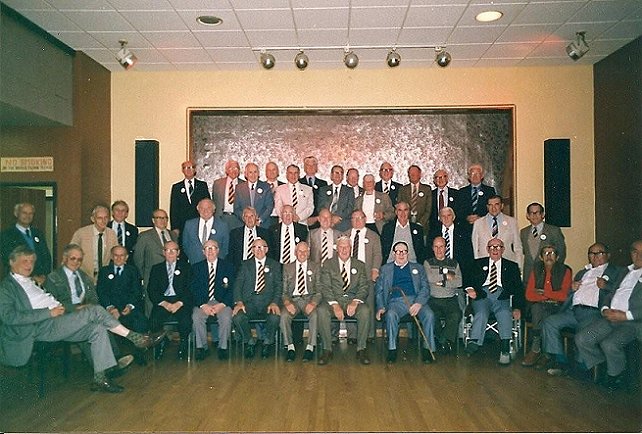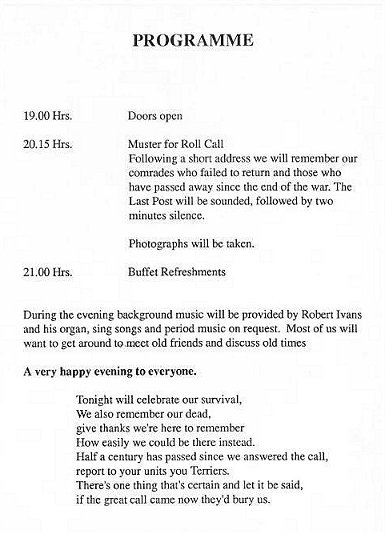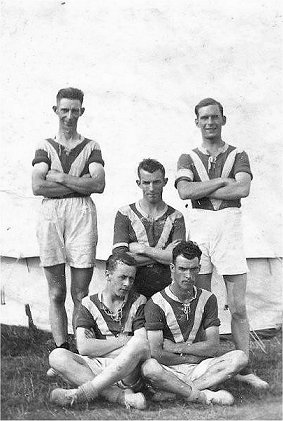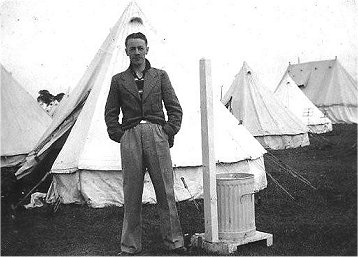8th Battalion Worcestershire Regiment - Cpl. Gilbert William Wheeler (5250845)
The 1st September 1939 marked the day of mobilization and for a while training. But a move was soon made to the concentration area at Marlborough, where the 8th Battalion Worcestershire Regiment settled down for 3 months of concentrated training. In January 1940, Cpl. Gilbert William Wheeler was with 'C' Company travelled with the rest of the 8th Battalion to Southampton. On the 15th January the men boarded a ship and at midday the following day they slipped out of harbour and crossed the channel with an escort of 3 destroyers and one battleship. At around 10 p.m. that evening they arrived at Le Havre, but were ordered to stay on board until 7 a.m. the next morning. The Battalion then moved up to a concentration area at Tourville before moving on again to Moncheaux, near the Belgian frontier, which was reached three days later. The 8th Battalion was part of 144th Brigade. During February and early March nothing much happened other than field training exercises. Once a week the men visited a local colliery at Le Forest where they were able to take a bath. On the 22nd March 1940, the 8th Battalion moved south to Lorry-le-Metz. 'C' Company were located at Monneren, a small village which appeared to be deserted. The task in this area was to patrol a section in front of the Maginot Line. In spite of the fact that German patrols were from time to time encountered, there were no casualties. After about 10 days 'C' Company was relieved and moved to a rest area at Kédange, some 15 miles behind the Maginot Line, for a two day rest. After which they were back patrolling some 10 miles in front of the Maginot Line. This type of activity continued through April with rest breaks at Kédange. On 24th April, the Battalion moved back to Moncheaux with Brigade H.Q. near by at Le Forest. It was to spend another month digging anti-tank defensive positions in the area and carrying out reconnaissances up to the Belgian frontier. But the war of mud and static defence abruptly ended when Germany invaded the Low Countries, and by 14th May the Battalion was way up at Dan Hoek on the outskirts of Brussels. On the 16th May, 'C' Company took up a position in a wood south of Brussels at Bois de Soignes. The following day orders were received to commence a complete withdrawal. During the move they were attacked by German dive bombers. A despatch rider reported that the German troops were closing in so a move was made towards Ninove and after a long march transport arrived. After travelling through the night they arrived at Tournai and then moved on to Wez Velvain on the 19th May. |
Cpl. G. W. Wheeler and wife Bessie (December 1939) |
8th Battalion Guard, Marlborough, 1939 (Cpl. G. W. Wheeler back row far left.) |
The next move was across the Belgian-French boarder. On 24th May the 8th Battalion arrived at Avelin. They had covered some 200 miles in the last ten days, fighting all the way. On 26th May, 144th Brigade was concentrated in and around Wormhoudt with The 2nd Battalion Royal Warwickshire Regiment in position in Wormhoudt village, while the 5th Battalion Gloucestershire Regiment were at Ledringhem, and were surrounded. The 8th Battalion Worcestershire Regiment were near the River Yser between Wylder and Bambecque. On the 27th May, orders were received for the village of Wormhoudt to held until midnight of the 28th May. On the 28th May, 'C' Company move towards Herzele, whilst 'A' and 'D' Companies were around Wylder, and 'B' Company were just south of Wormhoudt. Later that day 'C' Company move to Bambecque, Lieut. R. E. Cleverley, 14 Platoon commander of 'C' Company, and his men came under attack from German tanks and infantry and were overrun, he was wounded and later taken prisoner. |
Lieut. R. E. Cleverley had been shot in the leg and back. He was captured and carried to a German field dressing station, which was in a farmhouse. Eventually he was taken by a German field Ambulance to Camiers, near Le Touquet, where a field hospital had been setup in a children's home. He finally ended up in an officers P.O.W. Camp at Laufen but was later move to other camps including a period in Colditz. |
Positions of 144th Brigade on the 27th and 28th May 1940 |
Lieut. R. E. Cleverley |
A message from Brigade said there was no hope of relief, but ordered the 8th Battalion Worcesters to hold on best they could until about 2100 hours. “C” Company was now split into platoon localities. At 17.27 hours, Captain Macdonald sent a message to say he was being bombarded by mortars, and, four minutes later, another message saying that enemy infantry were just 200 yards away on his right flank.
29th May 1940 positions of 8th Battalion Worcestershire Regiment company locations |
Enemy tanks had broken into the village from the East. “C” Company was almost wiped out after a desperate resistance by platoons. Lieut. J. H. Nicolls, 15 Platoon, position was overrun, he and many of his men were captured and taken prisoner. Captain Macdonald had been killed by mortar shells, but when they looked for him there was no trace of his body. |
Lieut. J. H. Nicholls |
Corporal G. W. Wheeler ('C' Company), recalls;
"My platoon had taken cover in a wheatfield, hoping to hide from the Germans. This was ineffective and we were discovered. We were lined up and faced with a row of German soldiers, on motorbikes, all pointing guns at us. We all thought we were going to be shot. The Soldier in charge was an S.S. Officer in a very smart uniform, he spoke English."
Only a few survivors managed to escape but in the confusion no one could give us the complete story. Many men who where posted missing were assumed to have been killed.
Cpl. G. W. Wheeler |
In the days after many confused reports came back and many of the missing were presumed killed in action. Corporal G. W. Wheeler's wife Bessie was informed her husband had been killed in action and there was a report in the local newspaper. However, he was still very much alive and had been taken prisoner.
Extract below from the local Newspaper: Local War Casualties Cpl. G. Wheeler
He was initially reported missing, but was much later confirmed killed in action. His body was never found and he is remembered with others on the Dunkirk Memorial (Column 58).
Other Newspaper reports of 8th Battalion men: L/Cpl. Leslie Harold Wright (5247568) was also initially reported incorrectly as killed in action. His family were later notified he had been captured and was in a P.O.W. camp. Below are extracts from the local newspaper: |
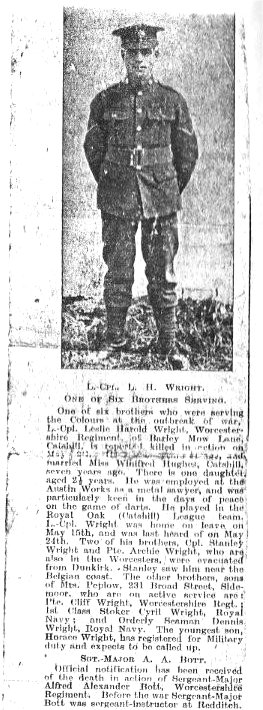 |
ONE OF SIX BROTHERS SERVING On the same day as Private William L. A. Wheeler was killed, Company Sergeant-Major Alfred Alexander Bott (5243761), also with the 8th battalion, was also killed they both died from German mortar shelling at the small village of Bruyelles during during the withdrawal towards Dunkirk. At the time the following reference was printed in the local newspaper: SGT.-MAJOR A. A. BOTT His body was also never found and he is remembered with others on the Dunkirk Memorial (Column 57). He was age 34. |
Private William L. A. Wheeler (5252100) |
PHOTOS FROM PRISONER OF WAR CAMPS - Stalag VIIIB (Stalag 344)
Memories and photos from Corporal G. W. Wheeler:
"After a time they were marched for many many miles to Luxemburg. I had no boots and by half way my feet were cut and covered in blisters, this was the same for the others too. The result of this would mean pain in my feet for the rest of my life.
Life in the Camp was austere and food not good. We ate whatever we could get our hands on. Made cigarettes from dried grass and pages from books. It took a long time to realise that freedom was not coming soon. The camaraderie of the prisoners was of paramount importance. We had to work at the cement factory, hard and dirty work, then later at a sugar factory where conditions were a little better.
Recreation was football when allowed. I also learned how to play poker and win! Though the winnings were not a lot. In time I became ‘the tailor’ having learned how to sew and was able to provide clothes for the others, made from anything going.
There was a time too, when I worked in the Red Cross hut, which was a good place to be…………………
Fraternising with the enemy was not tolerated, even though we had to come into contact with local people at the sugar factory. Anyone found being ‘friendly’ was severely punished and their names put on a notice board for all to see.
On some days the white ash that fell all over the camp was dreadful. It got into our food, eyes and all over everything. This was reported by the guards as being from the cattle burning some miles away. I later found that this was not true and the ash was due to the burning of people.
The POW had to try to escape, it was our duty and all sorts of methods were tried to do this. None of them succeeded for me, but a few men got away!!"
POW'S at Oppeln. Cement Factory (1941) - Arbeitskommandos - E17 |
Stalag VIIIB (Lamsdorf) was a large, German prisoner of war camp, which was later renumbered Stalag 344. It was located in Poland near the small town of Lamsdorf (now called Lambinowice) in an area what was then known as Upper Silesia. The nearest city is Opole. The camp initially occupied barracks built to house British and French prisoners in the First World War. In 1943, the Lamsdorf P.O.W. camp was split up, and many of the prisoners (and Arbeitskommandos) were transferred to two new base camps Stalag VIII-C Sagan and Stalag VIII-D Teschen. The base camp at Lamsdorf was re-numbered Stalag 344. The majority of men held in Stalag VIIIB were not in the main camp but in smaller working camps known as arbeitskommandos. These where numbered and prefixed with the letter "E" which stands for English, but POW's from many Commonwealth countries worked in these camps to. |
In letters from Corporal G. W. Wheeler there is reference to two of these arbeitskommandos where he worked, namely;
E17 - Oppeln. Cement Factory
E283 - Ratibor (sugar mill)
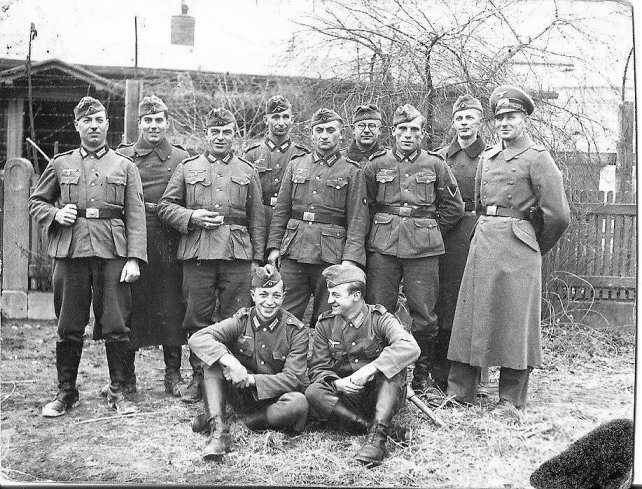
German POW Camp Guards, Stalag VIIIB (1941)
(photo submitted by Suzanne Macklin, daughter of Cpl. G. W. Wheeler)
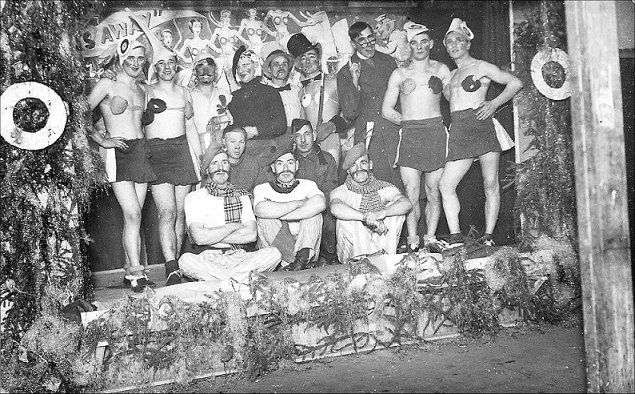
Camp Concert - Stalag VIIIB (1942)
Cpl. G. W. Wheeler is second from the left
(photo submitted by Suzanne Macklin, daughter of Cpl. G. W. Wheeler)
Front cover of letter sent by Corporal Gerald William Wheeler from Stalag VIIIB |
Letter from Cpl. G. W. Wheeler to wife Bessie (1942) |
Transcript of Corporal G. W. Wheeler's letter to his wife from his POW camp at Stalag VIIIB:
24/5/42
My Darling Bessie,
I received a letter from you last week, I'm sorry to hear you & Paul have been ill, but I hope you are better now, how is everyone at home. I'm still well & fit so dont worry darling, & I think we shall soon be together again. I've enclosed a photo in this of myself, Steve Outhwaite the shoe minder, & Lionel Breskal the interpreter, I hope you will like it.
Sweetheart never forget for one minute that I love you, your always in my thoughts, & I know you love me.
Note:
The other POW's mentioned in the letter;
Cpl. Steve Outhwaite (2589525) was from the Royal Signals. Private Lionel R. Breskal (6143297) was from the east Surrey Regiment.
Cpl. G. W. Wheeler, Cpl. S. Outhwaite and |
Location of Stalag VIIIB (Lamsdorf)
|
A few miles west of Lamsdorf is the town of Opole (Oppeln - in German) on the river Oder. It was at Opole (Oppeln) that Cpl. G. W. Wheeler worked at the Cement Factory. |
1942 (Cpl. G. W. Wheeler first row, second from right) |
Oppeln. 1942 - Cpl. G. W. Wheeler far right |
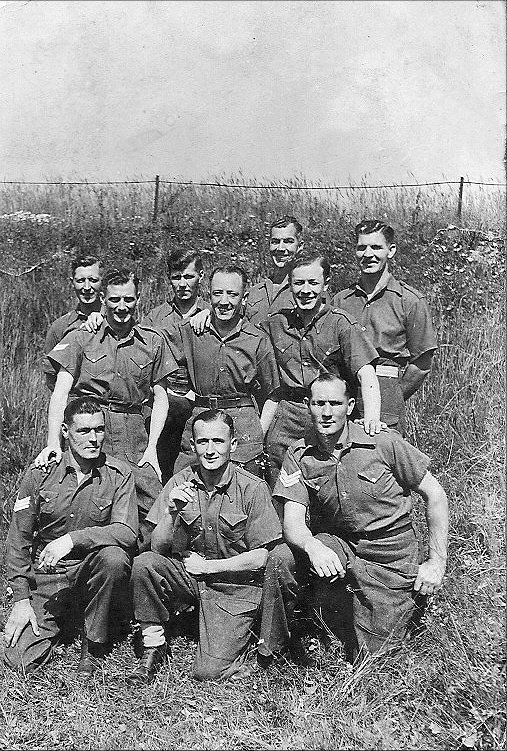
POW's who were working at the Oppeln. Cement Factory (1942)
(Arbeitskommandos - E17)
Corporal Gilbert William Wheeler (5250845) far right, middle row.
(photo submitted by Suzanne Macklin, daughter of Cpl. G. W. Wheeler)
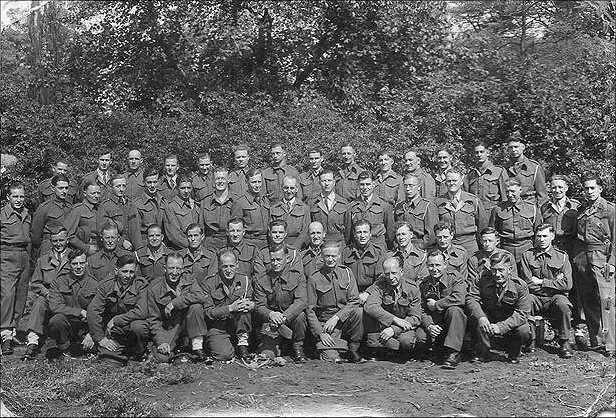
POW's at Ratibor Sugar Factory (1944)
Arbeitskommandos - E283
(photo submitted by Suzanne Macklin, daughter of Cpl. G. W. Wheeler)
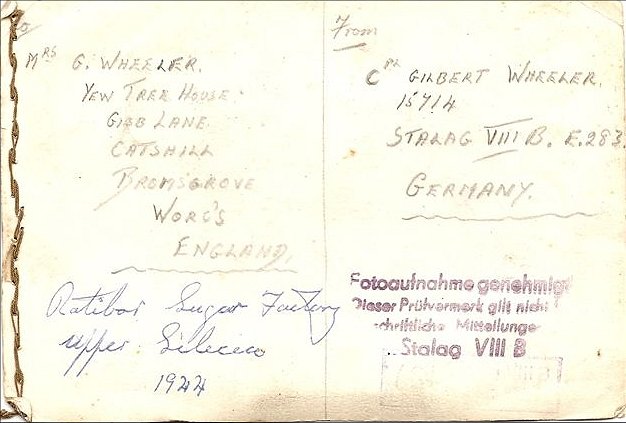
Reverse side of the above photo at Ratibor Sugar Factory (1944)
(photo submitted by Suzanne Macklin, daughter of Cpl. G. W. Wheeler)
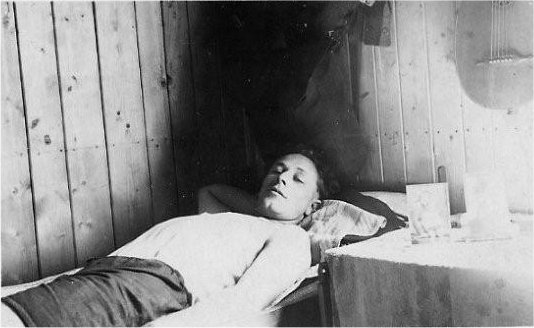
Corporal Gilbert William Wheeler resting at the Ratibor Sugar Factory (1943)
(photo submitted by Suzanne Macklin, daughter of Cpl. G. W. Wheeler)
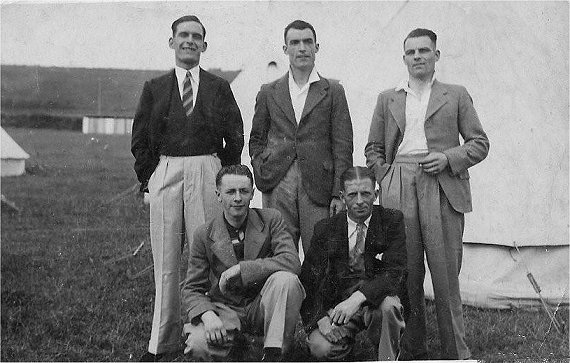
8th Battalion 'C' Company men at Porthcawl Annual Camp (August 1938)
Bill Bratt, Len Young, Les Wright, Bert Wheeler and Bill Baker. (Cpl. G. W. Wheeler at the front left kneeling)
On Sunday 31st July 1938 the 8th Battalion Worcestershire Regiment proceeded by train to Camp at Porthcawl. At the time the company strength was 87 men all ranks.
(photo submitted by Suzanne Macklin, daughter of Cpl. G. W. Wheeler)
50th Year reunion of 8th Battalion Worcestershire Regiment, 'C' Company (Friday 1st September 1989)
|
50th Year reunion of 8th Battalion Worcestershire Regiment, 'C' Company |
|
|
|
EARLIER PHOTOS (1936-38)
'C' Company Athletic Team, Weymouth 1936 On the 2nd August 1936 the 8th Battalion Worcestershire Regiment departed for Annual Training at Weymouth. The camp was on high ground near Preston and about 3¼ miles from Weymouth. The Battalion marched to Camp along the sea front, where the salute was taken by the Brigade Commander Colonel A. L. W. Newth, D.S.O. On the 12th August 1936, the 8th Battalion marched to Portland Docks, a distance of 9 miles to embark on H.M.S. Walpole and H.M.S. Vanquisher for a combined exercise with the Royal Navy. As soon as embarkation was completed the ships steamed out of harbour and across the bay along the Dorset coast eventually arriving at Ringstead Bay and then the men came ashore in 4 small vessels and assembled on high ground above the beach. During Camp, on the 6th August 1936, 'C' Company Athletic Team won the Battalion Sports Cup by a large margin. On the 15th August the Brigade Sports were held and the 8th Battalion won the Sports Trophy for the second year in succession. The Battalion broke Camp on the 16th August 1936.
Cpl. G. W. Wheeler at Porthcawl Camp (August 1938) |

